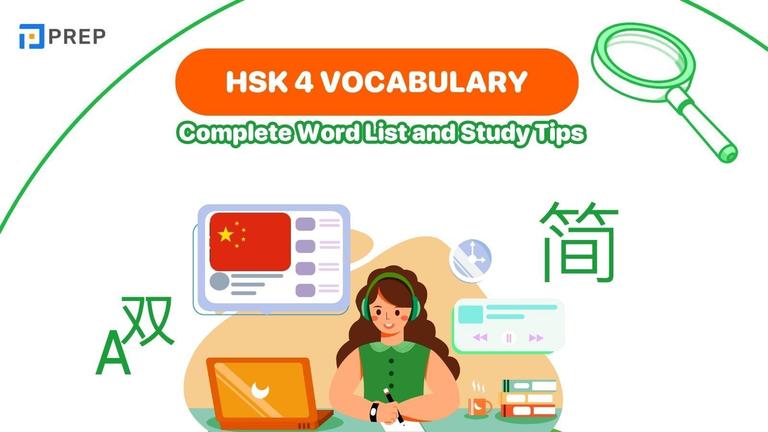Money in Chinese: Guide to Using Kuài, Yuán, and Digital Currency
Planning a trip to China or starting to learn Mandarin? One of the first things you'll need to master is how to talk about money. Understanding Chinese currency goes far beyond knowing the basic characters—it requires grasping the cultural nuances between formal and colloquial usage, navigating modern digital payment systems, and knowing exactly what phrases will help you in real-world situations. This comprehensive guide will equip you with everything you need to confidently handle money in Chinese, whether you're bargaining at a street market or scanning QR codes in Shanghai's most modern establishments.
Quick Answer Box:
-
Money: 钱 (qián)
-
Spoken Unit: 块 (kuài)
-
Ask Price: 多少钱? (Duōshǎo qián?)
- Primary Payment: Scan QR Code (扫码 - sǎo mǎ)
I. Decoding Formal vs. Spoken Money in Chinese
The key to mastering money in Chinese lies in understanding one fundamental distinction that separates beginners from confident speakers. Just as English speakers say "bucks" instead of "dollars" in casual conversation, Chinese has two completely different systems for talking about money—one formal, one colloquial. Recognizing this difference will transform how locals perceive your language skills and ensure you sound natural rather than robotic when discussing prices.
1. What is a Yuan (元)?
The official name of China's currency system is 人民币 (Rénmínbì), literally meaning "people's currency." Within this system, 元 (yuán) serves as the base unit that appears on all banknotes and official financial documents. When you examine Chinese currency, you'll notice the 元 character prominently displayed alongside the numerical value. This formal designation dominates banking contexts, government paperwork, and written contracts where precision and officiality matter most.
2. Why Everyone Says Kuài (块)
In daily conversation, virtually every Chinese speaker uses 块 (kuài) instead of yuan to say money in Chinese. This colloquial term functions exactly like "bucks" in American English—it's the natural, comfortable way locals express monetary amounts. Using "yuan" in casual conversation immediately marks you as a foreigner and creates unnecessary distance in social interactions. Master kuài, and you'll blend seamlessly into market negotiations, restaurant payments, and everyday financial discussions.
3. The Difference Between Jiǎo (角) and Máo (毛)
The formal subdivision system designates:
- 角 (jiǎo) as one-tenth of a yuan, appearing on coins and official price tags throughout China.
- 毛 (máo) is used to express these same amounts in conversation.
The mathematical relationship remains consistent: 1 元/块 = 10 角/毛, but the social implications of your word choice significantly impact how natural you sound to native speakers.
4. What is a Fēn (分)?
分 (fēn) represents one-hundredth of a yuan in China's official monetary system, though modern economic realities have rendered this unit largely obsolete. Inflation, widespread price rounding, and the dominance of digital payment platforms mean that fēn rarely appears in actual transactions. Contemporary Chinese commerce operates primarily in whole yuan and máo amounts, making fēn knowledge useful for comprehension but unnecessary for practical application.
|
Price |
Written Form (Formal) |
Spoken Form (Colloquial) |
|
¥12.80 |
十二元八角 (shí'èr yuán bā jiǎo) |
十二块八 (shí'èr kuài bā) |
|
¥5.06 |
五元零六分 (wǔ yuán líng liù fēn) |
五块零六 (wǔ kuài líng liù) |
|
¥25.50 |
二十五元五角 (èrshíwǔ yuán wǔ jiǎo) |
二十五块五 (èrshíwǔ kuài wǔ) |
Expert Tip: In spoken prices like "shí'èr kuài bā," native speakers omit the final unit "máo" because it's understood from context. This linguistic efficiency demonstrates the natural flow of colloquial money in Chinese language usage.
II. Essential Phrases of Money in Chinese for Shopping & Paying
Theoretical knowledge transforms into practical confidence only when you can navigate real purchasing situations with appropriate phrases and cultural awareness.
1. How to Ask for the Price
-
The Universal Question that works in any commercial setting throughout China is 这个多少钱? (Zhège duōshǎo qián?). Breaking down this essential phrase reveals its logical structure:
这个 (this) + 多少 (how much) + 钱 (money)
This creates a straightforward inquiry that vendors expect and appreciate. This question demonstrates respect for the seller while clearly communicating your purchasing interest.
-
Pointing and Asking becomes necessary when examining multiple items, and the simple follow-up 那个呢? (Nàge ne?) maintains conversational flow while indicating different products. This phrase translates to "What about that one?" and allows you to efficiently compare prices without repeating the full question structure.
2. Bargaining and Responding to the Price (Cultural Context)
Negotiating prices requires understanding where bargaining is culturally appropriate versus where it might cause embarrassment. Traditional markets, street vendors, and tourist areas generally expect price discussions, while department stores, supermarkets, and established businesses maintain fixed pricing systems. Key bargaining phrases include 太贵了 (tài guì le) meaning "too expensive" and 便宜一点 (piányí yīdiǎn) requesting "a little cheaper." Remember that how to say money in Chinese during negotiations often determines whether vendors take your bargaining seriously.
3. Finalizing the Purchase: How to Say "Pay the Bill"
Different payment contexts require specific vocabulary that demonstrates cultural sophistication.
-
买单 (mǎidān) applies specifically to restaurants and service-oriented businesses where you're settling a tab or bill.
-
付钱 (fùqián) serves as the general term for paying money in any commercial transaction.
Understanding this distinction prevents awkward moments and shows vendors that you grasp the nuances of money in Chinese language beyond basic tourist phrases.
III. Navigating China's Digital Payment Ecosystem
Contemporary China operates as a predominantly cashless society where digital transactions dominate urban commercial life, making traditional currency knowledge only part of the complete picture.
Understanding modern money in Chinese requires familiarity with the two dominant platforms that control virtually all digital transactions. 支付宝 (Zhīfùbǎo), known internationally as Alipay, and 微信支付 (Wēixìn Zhīfù), or WeChat Pay, process the vast majority of daily purchases from street food to luxury goods. These platforms have revolutionized how Chinese consumers interact with money, making physical currency increasingly rare in major cities.
The Single Most Important Action: "Scanning the QR Code"
The phrase 扫码 (sǎo mǎ) literally means "scan code" and represents the most common payment action in modern China. Whether purchasing groceries, paying for transportation, or settling restaurant bills, this simple action connects your digital wallet to the merchant's payment system.
Mastering this term and understanding the scanning process enables participation in China's digital economy, where asking "how do you say money in chinese" becomes less relevant than knowing how to execute seamless digital transactions.
IV. Expanding Your Core Vocabulary about Money in Chinese
Comprehensive fluency requires vocabulary that extends beyond basic monetary units into the practical language of financial interactions and money management.
|
Category |
English Term |
Chinese Characters |
Pinyin |
Usage Context |
|
Money Handling |
Change money/Exchange |
换钱 |
huàn qián |
Currency exchange, banks |
|
Give change |
找钱 |
zhǎo qián |
Receiving change from purchase |
|
|
Small change/Coins |
零钱 |
líng qián |
Loose coins, small bills |
|
|
Save money |
省钱 |
shěng qián |
Being frugal, saving costs |
|
|
Spend money |
花钱 |
huā qián |
Making purchases |
|
|
Earn money |
赚钱 |
zhuàn qián |
Making income |
|
|
Waste money |
浪费钱 |
làngfèi qián |
Spending unnecessarily |
|
|
Banking |
Bank |
银行 |
yínháng |
Financial institution |
|
Withdraw money |
取钱 |
qǔ qián |
ATM, bank counter |
|
|
Deposit money |
存钱 |
cún qián |
Saving to account |
|
|
Bank card |
银行卡 |
yínháng kǎ |
Debit/credit card |
|
|
ATM |
自动取款机 |
zìdòng qǔkuǎn jī |
Automated teller machine |
|
|
Account |
账户 |
zhànghù |
Bank account |
|
|
Password |
密码 |
mìmǎ |
PIN, account password |
|
|
Advanced Financial |
Exchange rate |
汇率 |
huìlǜ |
Currency conversion |
|
Transaction fee |
手续费 |
shǒuxùfèi |
Service charges |
|
|
Account balance |
余额 |
yú'é |
Available funds |
|
|
Transfer money |
转账 |
zhuǎnzhàng |
Send money to account |
|
|
Interest rate |
利率 |
lìlǜ |
Banking, investment |
|
|
Credit |
信用 |
xìnyòng |
Financial credibility |
|
|
Loan |
贷款 |
dàikuǎn |
Borrowing money |
|
|
Shopping/Commercial |
Receipt |
收据 |
shōujù |
Purchase proof |
|
Invoice |
发票 |
fāpiào |
Tax receipt |
|
|
Discount |
打折 |
dǎzhé |
Price reduction |
|
|
Refund |
退款 |
tuìkuǎn |
Money back |
|
|
Installment |
分期 |
fēnqī |
Payment plan |
|
|
Cash |
现金 |
xiànjīn |
Physical money |
|
|
Credit card |
信用卡 |
xìnyòng kǎ |
Plastic payment card |
|
|
Digital Payment |
Mobile payment |
手机支付 |
shǒujī zhīfù |
Phone-based payment |
|
QR code |
二维码 |
èrwéi mǎ |
Square barcode |
|
|
Scan |
扫描 |
sǎomiáo |
Read QR code |
|
|
Digital wallet |
电子钱包 |
diànzǐ qiánbāo |
Online payment account |
|
|
Top up |
充值 |
chōngzhí |
Add money to account |
V. Conclusion
Mastering money in Chinese opens doors to authentic cultural experiences and confident commercial interactions throughout China and Chinese-speaking communities worldwide. The distinction between formal yuán and colloquial kuài, combined with essential phrases and digital payment vocabulary, provides the foundation for natural financial communication. Whether you're exploring traditional markets or navigating cutting-edge digital platforms, this knowledge transforms challenging transactions into opportunities for meaningful cultural connection and practical accomplishment.

Hi I'm Chloe, and I am currently serving as an Product Content Administrator at Prep Education. With over five years of experience in independent online IELTS study and exam preparation, I am confident in my ability to support learners in achieving their highest possible scores.
Comment
Premium content
View allPersonalized roadmap
Most read












